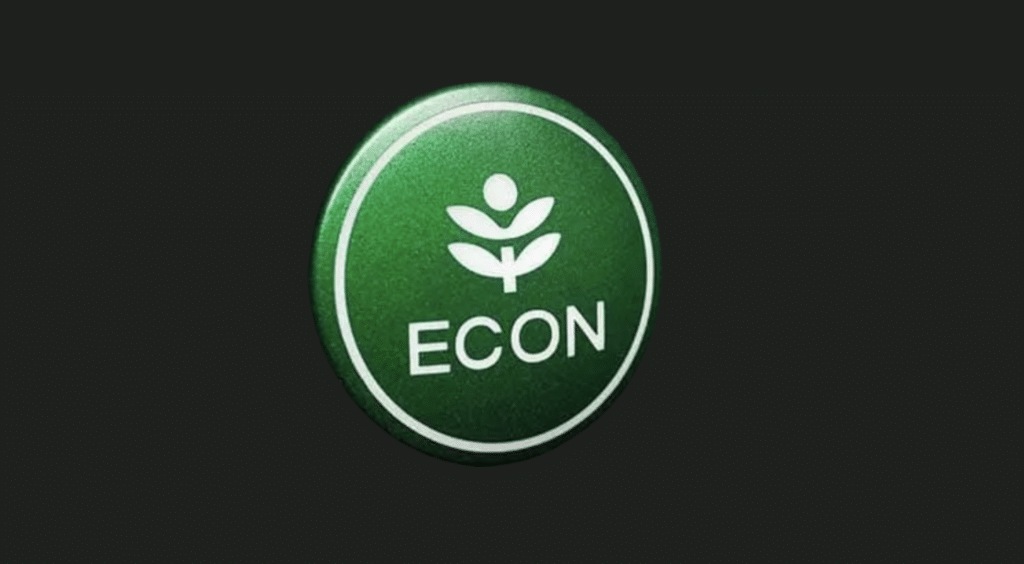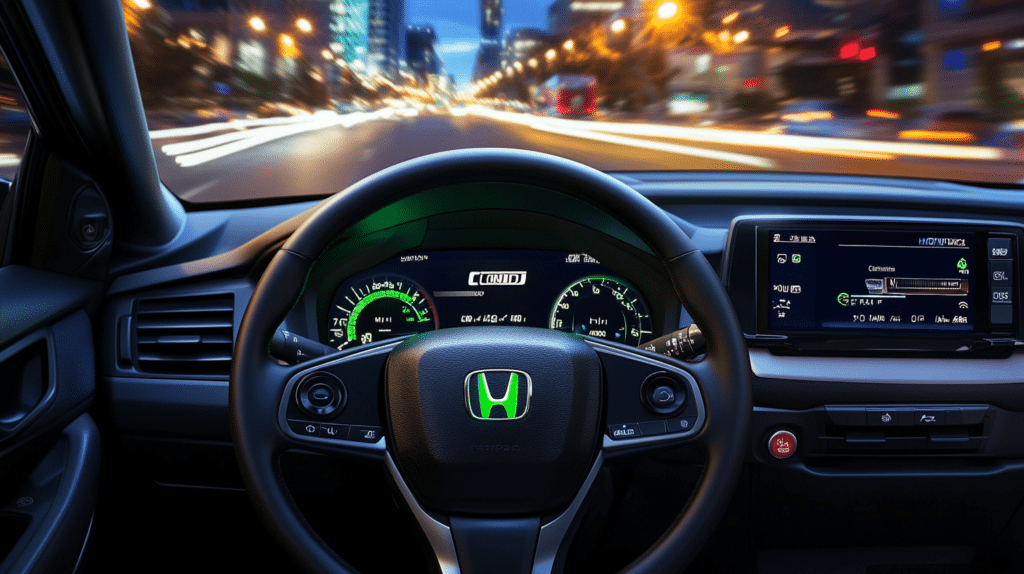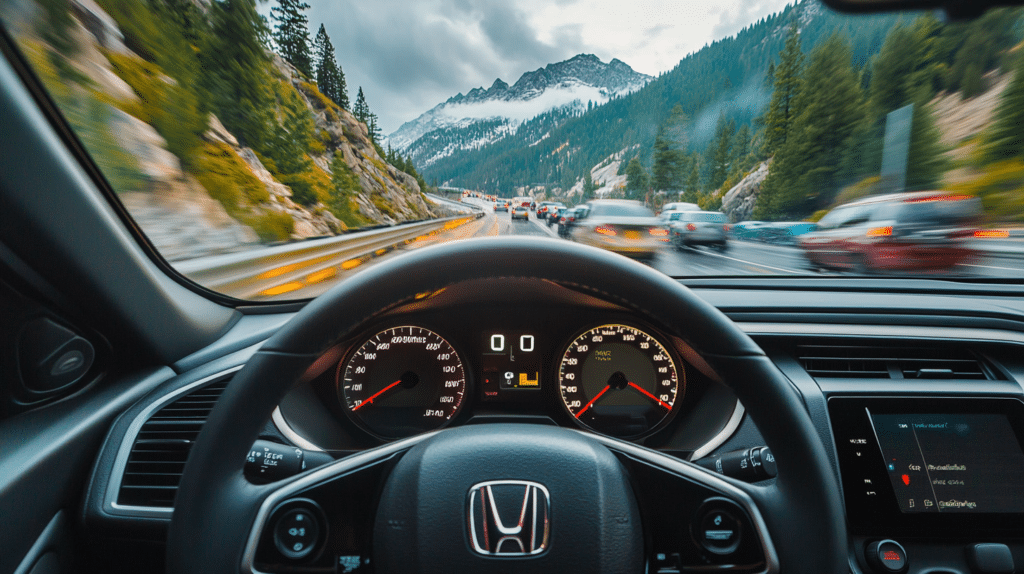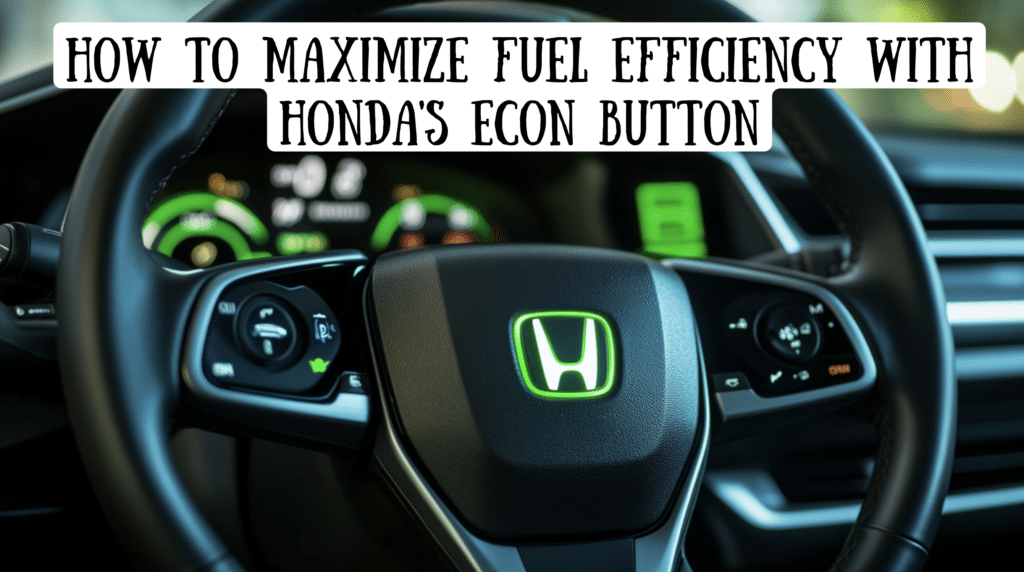Have you noticed your gas expenses increasing each month?
Like many drivers, I understand the frustration of watching my fuel costs rise while trying to maintain my daily commute.
Each trip to the gas station feels more painful than the last, making me wonder if there’s a better way to manage these expenses.
The good news is that if you own a Honda with an Econ button, you already have a helpful tool at your fingertips.
I’ll show you exactly how to use this feature to lower your fuel costs without changing your driving routine.
By the end of this guide, you will know when to press that little green button—and, more importantly, when not to.
What Is Honda’s Econ Button?
You’ve probably noticed a small green button with the word “ECON” on your Honda’s dashboard or near the gear shift.
It might seem simple, but this button does quite a bit behind the scenes. Think of the Econ button as your car’s fuel-saving assistant.
The Econ button modifies your vehicle’s engine, transmission, and climate control settings.
When you press this button, your Honda automatically adjusts these systems to use less fuel while maintaining comfortable driving conditions.
Each time you activate this feature, you choose a more efficient driving mode, which can lead to noticeable savings on gas costs.
The system makes small changes that add up to meaningful results over time.
How Does The Econ Button Work?

Let me explain exactly what happens when you press that green button. While the changes might seem subtle, they can really affect your fuel consumption.
Throttle Adjustments
Picture this: you’re driving down the street and press the gas pedal. With Econ mode on, your car becomes more thoughtful about using fuel.
At city driving speeds, the throttle response feels smoother and more controlled.
The best part? This change mostly affects mid-range speeds—think 30 to 50 mph.
When you need to merge onto a highway or make a quick move, pressing the pedal all the way down still gives you full power. It’s like having both efficiency and power when you need them.
Transmission Changes
When Econ is on, your transmission becomes more strategic about shifting gears. Instead of holding gears longer for maximum performance, it shifts at lower engine speeds to save fuel.
Let’s say you’re accelerating from a stop light. Without Econ, your car might wait until 3,000 RPM to shift.
With Econ on, it might shift at 2,500 RPM instead. These small adjustments add up to noticeable fuel savings over time.
Cruise Control Behavior
Here’s where it gets interesting. With Econ mode on, your cruise control becomes more flexible.
Going up a hill? Your car might slow down slightly instead of downshifting to maintain the exact speed.
Think about it this way: it’s like the difference between someone who insists on walking at exactly 3 mph versus someone who slows down slightly on hills.
The second person uses less energy overall, and that’s what your car does in Econ mode.
Air Conditioning Settings
The AC system takes a more measured approach in Econ mode. Instead of blasting cold air at full power, it cycles the compressor more efficiently. This means:
- Initial cooling takes a bit longer
- The system cycles on and off more frequently
- Once your car reaches the right temperature, it maintains it while using less power
When To Use The Econ Button

I’ve found that knowing when to use the Econ button makes a big difference in saving fuel.
Let me share the best situations where this feature shines.
1. Daily City Driving
Your regular commute is ideal for Econ mode. When you’re:
- Stopping at traffic lights
- Driving in slow-moving traffic
- Making short trips around town
The steady, controlled driving in these situations lets the Econ system work at its best.
2. Highway Cruising
Once you’re up to speed on the highway, press that Econ button. It works great when:
- You’re maintaining steady speeds
- The road is mostly flat
- Traffic is flowing smoothly
3. Moderate Weather
Spring and fall are perfect seasons for Econ mode because:
- The temperature is mild
- You don’t need much air conditioning
- Your car runs most efficiently
When you use Econ mode in these conditions, you’ll see:
- Fewer stops at the gas station
- Better fuel economy numbers on your display
- No real difference in your daily driving experience
The beauty of using Econ mode in these situations is that you can save money without significantly changing your driving habits.
When Not To Use The Econ Button

I want to share some key situations in which you should turn off Econ mode.
Your safety and comfort should always come first, and sometimes, that means using a bit more fuel.
1. Hot Weather Situations
When the temperature rises, you might want to skip Econ mode:
- During the first few minutes of driving on hot days
- When you need quick cabin cooling
- If passengers are feeling uncomfortable from the heat
- When outside temperatures are very high
2. Demanding Driving Conditions
Turn off Econ mode when you need extra power:
- Merging onto busy highways
- Going up steep hills
- Passing other vehicles
- Driving on mountain roads
3. Heavy Load Situations
Your car needs full power when:
- Pulling a trailer
- Carrying a full load of passengers
- Driving with heavy cargo
- Going up long inclines
4. Bad Weather Driving
Safety comes first in these conditions:
- Heavy rain
- Strong headwinds
- Slippery roads
- Any weather that requires a quick response from your vehicle
Remember, you can always switch Econ mode back on once these situations pass.
The button is right there on your dashboard, ready to help you save fuel when conditions improve.
Additional Tips For Maximizing Fuel Efficiency
Effective use of your Honda’s Econ button goes beyond pressing it. I’ve found several simple tricks that can significantly increase your fuel savings.
Smart driving matters most. I treat the gas pedal gently, like a delicate control, instead of an on-off switch. When leaving stoplights, I press slowly and steadily.
This smooth approach saves fuel and improves the ride.
Your Honda’s Auto Idle Stop works great with Econ mode. At long red lights, I keep my foot firmly on the brake to let Auto Idle Stop work.
The engine shuts off to save fuel but starts right up when needed.
Simple maintenance also helps. I check tire pressure monthly and keep up with the air filter and oil changes.
One often-forgotten tip is to remove extra weight from your car.
Empty trunks use less fuel, especially when paired with Econ mode and good driving habits.
Conclusion
The Econ button in your Honda offers a simple path to better fuel efficiency.
Throughout this guide, I’ve shared how this small feature adjusts your car’s throttle, transmission, cruise control, and air conditioning to reduce fuel use.
Using the Econ button is all about timing. During your daily commute or highway cruising, it helps save fuel without disrupting your drive.
You should switch it off to improve your performance in challenging situations, such as merging onto highways or driving in extreme heat.
When combined with smooth driving and basic maintenance, the Econ button becomes a valuable tool for managing fuel costs.
It’s not just about pressing a button – it’s about understanding how and when to use it.
This knowledge turns a simple feature into a practical way to save money on every drive.


